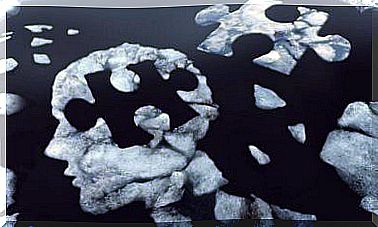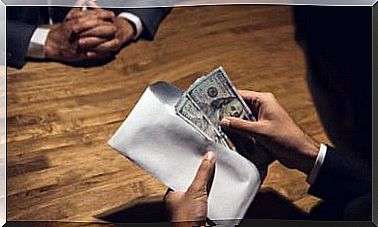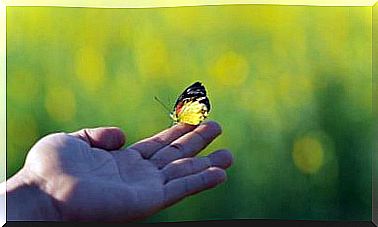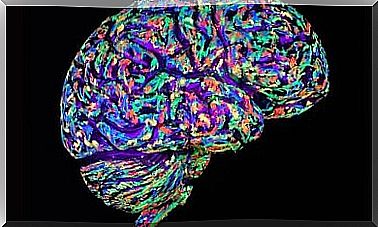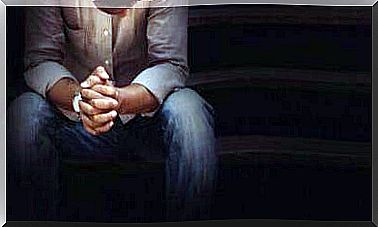The Different Types Of Introvert Behavior

The definition of introverted behavior goes far beyond the attitudes that a person acquires in socialization.
We can see this by taking a look at the 10-question introvert-extrovert test on Susan Cain’s page, The Quiet Revolution . The features of introversion described in the test show us that the definition of introversion has fortunately been updated.
Research on introversion has long since bypassed typical comparisons such as “I like to be alone / I like to be with people” . Introverted behavior can have as many, or more, nuances than extroverted behavior.
Introverts may have certain preferences for their socialization that have not usually been available. Therefore, they may prefer to stay at home.
They can have fun with other people, but in a different way than the extroverts. And above all, their preferences for certain activities may vary over time, just as for other people.

Introverted behavior and the different forms
In the 1920s, Carl Gustav Jung created the difference between introvert / extrovert. Despite its existence, it was not until the 1940s that it began to be used in psychology to a greater extent.
They began to conduct research mainly in the field of personality. Jung also identified a third personality type, although he never categorized it.
Today we have the term ambivert . It falls right into the center of the introvert-extrovert plane. In many ways, ambitious people have the best of both worlds. They manage to use the power of introverts and extroverts, depending on the situation.
Many experts, such as Jonathan Cheek and Jennifer Grimes, have spent time studying and identifying the different types of introverts. The first type is the one that will seem most famous: social introverts.
1. Social introverts
This is the profile that most closely resembles the widespread view of introversion. These are people who value reading at home more than going out.
A social introvert values his home and his immediate relationships very much, and prefers to go out for a drink with lifelong friends rather than go to a music festival.
Although many people consider them to be the same as shy people, there is an important difference. While shy people feel anxious when they are the center of attention (or that there is a chance they will be) , social introverts feel better in smaller groups when the level of stimulation and change does not tend to be as high.
2. Introverted behavior: Introverted introverts
Another type identified by Cheek and Grimes is what they call “introverted introverts.” The focus of this type of introvert is more internal. Unlike social introverts, introverted introverts have no problem socializing.
The main feature of this type of introvert behavior is that they are people with a large inner world. They can get lost in fantasy worlds, and their imagination makes them very creative.
Professor Cheek said that these introverts are “capable of being lost in an inner fantasy world; not in a neurotic way, but rather in an imaginative and creative way. ”
An example Cheek gives is Lulla Lunekjær, the magician from the Harry Potter universe. Her inner madness, which made her both mysterious and deranged, defines an introverted introvert perfectly.

Reserved introverts
The third type of introverted behavior that Jonathan Cheek talks about is defined more by their actions than their thoughts. “Reserved introverts” think of doing things at a slower pace than other people. They also perform these actions in a more conscious and thoughtful way.
Reserved introverts prefer to think before they talk or act, and may spend more time getting started. Professor Cheek says “I have never thought of introversion in this way before, and I am therefore interested in seeing what future research tells us about reserved introverts and how it corresponds with the other types.”
They take their time before doing anything, plan everything they are going to do for the day, and like to have situations under control. Unlike anxious introverts (see following category), they do not necessarily feel insecure in any way. They are simply people who analyze the world carefully and do not act impulsively.
4. Introverted behavior: Anxious introverted or social anxiety?
Professor Cheek points out another type of introvert behavior – the anxious introvert. They say things like, “I feel self-conscious when I’m around strangers” or “Even when I’m in a group with friends, I feel very lonely and restless.”
With people like this, it is sometimes difficult to distinguish between those who are introverted and those who suffer from social anxiety.
Reflections on introversion
Introverts are people who enjoy solitude and usually have an active inner life. They take a more conscious approach to personal growth and feel exhausted by overstimulating surroundings.
Depending on the person, the typical traits may vary in their appearance, but in general they all have quite similar personalities.
The surprising thing about the different variants or components of introversion is how enriching they can all be. Extroverts always tend to take advantage of the assumption that their way of life is the healthiest psychological way.
However, researchers such as Cain and Dembling have shown us with their research just how varied and adapted introverted behavior can be.

